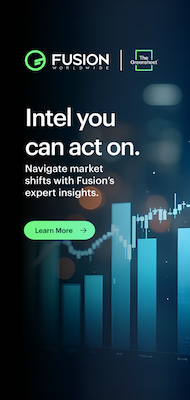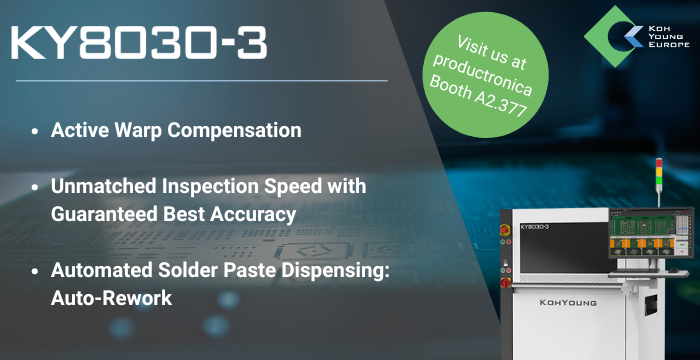Electronics Production |
Memory suppliers fail history lesson—again!
According to the upcoming April update of IC Insights' 2007 McClean Report, total worldwide semiconductor industry capital spending surged 18% to $54.75 billion in 2006. This figure represented 22.1% of total semiconductor sales last year.
Capital spending for additional flash memory capacity jumped 35% to $11.5 billion. DRAM capital spending increased a whopping 44% last year to $13.9 billion.
Figure 1 shows the 2006 capital spending as a percent of sales for the major semiconductor product segments. As shown, flash memory spending as a percent of flash sales reached 57% in 2006, more than 2.5x the industry average! In 2006, flash unit shipments grew 32%. However, after the huge capital spending outlays in this segment, is it really any surprise that the average selling price (ASP) for a flash memory device collapsed by 18% last year, and is forecast to drop another 15% this year?
The DRAM market was one of the shining stars in the semiconductor industry last year, growing by 32%. Moreover, this growth was due to a balanced combination of excellent unit volume growth (13%) and ASP increase (17%). However, it appears that one "sniff" of a good year for the DRAM market has again collectively caused the DRAM suppliers to develop temporary insanity (reluctantly using the term temporary) with regards to capital spending and capacity increases. In the DRAM segment, capital spending as a percent of sales was 41%, almost twice the 2006 industry average. The result—the immutable law of supply and demand is now causing a severe decline in DRAM prices, even in the face of good demand.
As many of our clients know, IC Insights has long held that the IC industry has been "maturing" over the past five years and pointed to the DRAM market as a good example of how the evolution toward fewer suppliers would ultimately lessen the overspending and wild capacity/ASP swings in a product segment. With regards to progress, the DRAM market was oftentimes viewed as taking two steps forward and one step back. However, in IC Insights' opinion, the capital spending surge in the DRAM industry in 2006 and continuing through 2007, set back the evolution of the DRAM marketplace at least 10 years. Now, it appears the DRAM market is taking one step forward and two steps back.
In IC Insights' opinion, the flash market is immature compared to the DRAM market and has been expected, over time, to undergo a supplier shakeout similar to the DRAM segment. However, as of early 2007, there are absolutely no indications that this maturation process is occuring in flash memory!
 The following list includes examples of the recent return to "irrational" exuberance by the DRAM and flash memory producers:
• Powerchip's capital spending in 2004 was $600 million, in 2005 it was $1.3 billion, and in 2006 it was $2.6 billion! The company's capital spending as a percent of sales last year was 92.3%.
• Nanya's capital spending in 2005 was $439 million, in 2006 it was $910 million, and in 2007 it is forecast to be $2.4 billion. The company's capital spending as a percent of sales this year is expected to be close to 100%!
• Hynix' capital spending in 2004 was $1.46 billion, in 2005 it was $2.43 billion, and in 2006 it was $4.38 billion! The company's capital spending as a percent of sales last year was 55%.
• Micron's capital spending in FY06 (ending in August) was $1.69 billion. The company's announced capital spending plan for FY07 is $4.0 billion! In addition to boosting DRAM capacity, this spending includes greater than $1.0 billion of investment in the new flash joint venture with Intel (IM Flash).
• SanDisk and Toshiba continue to make multi-billion dollar spending plans for additional flash memory capacity through their joint venture companies—Flash Vision (200mm), Flash Partners (300mm), and Flash Alliance (300mm).
• It should be noted that the leading Japanese DRAM producer Elpida is not sitting still with regards to capital spending—it spent 36% of sales on capital expenditures last year.
• And last, but certainly not least, Samsung, the number one producer of DRAM and flash, continues to spend almost $7.0 billion a year on capital expenditures, mostly for DRAM and flash memory capacity expansion.
Thus, we are left with the same old story in the IC memory market—the story of 10 manufacturers all planning and spending to capture 15-20% marketshare. IC Insights forecasts continued strong and expanding demand for both flash and DRAM devices over the next few years. However, it has once again been proven that high demand can be outstripped by even higher amounts of capacity additions. For today's memory producers it is déja vu all over again!
The following list includes examples of the recent return to "irrational" exuberance by the DRAM and flash memory producers:
• Powerchip's capital spending in 2004 was $600 million, in 2005 it was $1.3 billion, and in 2006 it was $2.6 billion! The company's capital spending as a percent of sales last year was 92.3%.
• Nanya's capital spending in 2005 was $439 million, in 2006 it was $910 million, and in 2007 it is forecast to be $2.4 billion. The company's capital spending as a percent of sales this year is expected to be close to 100%!
• Hynix' capital spending in 2004 was $1.46 billion, in 2005 it was $2.43 billion, and in 2006 it was $4.38 billion! The company's capital spending as a percent of sales last year was 55%.
• Micron's capital spending in FY06 (ending in August) was $1.69 billion. The company's announced capital spending plan for FY07 is $4.0 billion! In addition to boosting DRAM capacity, this spending includes greater than $1.0 billion of investment in the new flash joint venture with Intel (IM Flash).
• SanDisk and Toshiba continue to make multi-billion dollar spending plans for additional flash memory capacity through their joint venture companies—Flash Vision (200mm), Flash Partners (300mm), and Flash Alliance (300mm).
• It should be noted that the leading Japanese DRAM producer Elpida is not sitting still with regards to capital spending—it spent 36% of sales on capital expenditures last year.
• And last, but certainly not least, Samsung, the number one producer of DRAM and flash, continues to spend almost $7.0 billion a year on capital expenditures, mostly for DRAM and flash memory capacity expansion.
Thus, we are left with the same old story in the IC memory market—the story of 10 manufacturers all planning and spending to capture 15-20% marketshare. IC Insights forecasts continued strong and expanding demand for both flash and DRAM devices over the next few years. However, it has once again been proven that high demand can be outstripped by even higher amounts of capacity additions. For today's memory producers it is déja vu all over again!
 The following list includes examples of the recent return to "irrational" exuberance by the DRAM and flash memory producers:
• Powerchip's capital spending in 2004 was $600 million, in 2005 it was $1.3 billion, and in 2006 it was $2.6 billion! The company's capital spending as a percent of sales last year was 92.3%.
• Nanya's capital spending in 2005 was $439 million, in 2006 it was $910 million, and in 2007 it is forecast to be $2.4 billion. The company's capital spending as a percent of sales this year is expected to be close to 100%!
• Hynix' capital spending in 2004 was $1.46 billion, in 2005 it was $2.43 billion, and in 2006 it was $4.38 billion! The company's capital spending as a percent of sales last year was 55%.
• Micron's capital spending in FY06 (ending in August) was $1.69 billion. The company's announced capital spending plan for FY07 is $4.0 billion! In addition to boosting DRAM capacity, this spending includes greater than $1.0 billion of investment in the new flash joint venture with Intel (IM Flash).
• SanDisk and Toshiba continue to make multi-billion dollar spending plans for additional flash memory capacity through their joint venture companies—Flash Vision (200mm), Flash Partners (300mm), and Flash Alliance (300mm).
• It should be noted that the leading Japanese DRAM producer Elpida is not sitting still with regards to capital spending—it spent 36% of sales on capital expenditures last year.
• And last, but certainly not least, Samsung, the number one producer of DRAM and flash, continues to spend almost $7.0 billion a year on capital expenditures, mostly for DRAM and flash memory capacity expansion.
Thus, we are left with the same old story in the IC memory market—the story of 10 manufacturers all planning and spending to capture 15-20% marketshare. IC Insights forecasts continued strong and expanding demand for both flash and DRAM devices over the next few years. However, it has once again been proven that high demand can be outstripped by even higher amounts of capacity additions. For today's memory producers it is déja vu all over again!
The following list includes examples of the recent return to "irrational" exuberance by the DRAM and flash memory producers:
• Powerchip's capital spending in 2004 was $600 million, in 2005 it was $1.3 billion, and in 2006 it was $2.6 billion! The company's capital spending as a percent of sales last year was 92.3%.
• Nanya's capital spending in 2005 was $439 million, in 2006 it was $910 million, and in 2007 it is forecast to be $2.4 billion. The company's capital spending as a percent of sales this year is expected to be close to 100%!
• Hynix' capital spending in 2004 was $1.46 billion, in 2005 it was $2.43 billion, and in 2006 it was $4.38 billion! The company's capital spending as a percent of sales last year was 55%.
• Micron's capital spending in FY06 (ending in August) was $1.69 billion. The company's announced capital spending plan for FY07 is $4.0 billion! In addition to boosting DRAM capacity, this spending includes greater than $1.0 billion of investment in the new flash joint venture with Intel (IM Flash).
• SanDisk and Toshiba continue to make multi-billion dollar spending plans for additional flash memory capacity through their joint venture companies—Flash Vision (200mm), Flash Partners (300mm), and Flash Alliance (300mm).
• It should be noted that the leading Japanese DRAM producer Elpida is not sitting still with regards to capital spending—it spent 36% of sales on capital expenditures last year.
• And last, but certainly not least, Samsung, the number one producer of DRAM and flash, continues to spend almost $7.0 billion a year on capital expenditures, mostly for DRAM and flash memory capacity expansion.
Thus, we are left with the same old story in the IC memory market—the story of 10 manufacturers all planning and spending to capture 15-20% marketshare. IC Insights forecasts continued strong and expanding demand for both flash and DRAM devices over the next few years. However, it has once again been proven that high demand can be outstripped by even higher amounts of capacity additions. For today's memory producers it is déja vu all over again!


